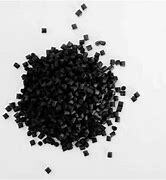Overview of Titanium carbide guide roller for wire rod mills
Titanium Carbide (TiC) is a technical ceramic material renowned for its exceptional hardness, wear resistance, and high melting point. Composed of titanium and carbon atoms, it forms a part of the wider family of transition metal carbides. Its unique combination of properties makes it a versatile and valuable component in various industrial applications where extreme conditions necessitate robust and durable materials.
Features of Titanium carbide guide roller for wire rod mills
-
Exceptional Hardness: With a Vickers hardness ranging from 2000 to 3200 Hv, TiC ranks among the hardest materials, surpassing many steels and rivaling tungsten carbide.
-
High Melting Point: Boasting a melting point of approximately 3160°C, titanium carbide is ideal for high-temperature applications where stability and strength are crucial.
-
Oxidation Resistance: Forms a protective oxide layer at elevated temperatures, slowing down further oxidation and enhancing its performance in oxidative environments.
-
Chemical Stability: Resistant to most acids and alkalis, TiC maintains its integrity in corrosive conditions, excluding hydrofluoric acid and strong alkalis.
-
Thermal Conductivity: Exhibits good thermal conductivity, facilitating heat dissipation and enhancing performance in high-heat-load applications.
-
Density: Despite its hardness, titanium carbide has a relatively low density of about 4.93 g/cm³, contributing to its use in lightweight yet durable structures.

(Titanium carbide guide roller for wire rod mills)
Parameters of Titanium carbide guide roller for wire rod mills
The parameters for the titanium carbide guide roller in a wire rod mill can vary depending on the specific machine and operating conditions. However, some common parameters include:
* Ball size: The ball size should be small enough to prevent it from pinching or cutting through the wire material.
* Wheel speed: The wheel speed should be moderate enough to ensure that the wheel is operating at the correct speed for the particular application.
* Travel distance: The travel distance of the guide roller should be sufficient to accommodate the wear on the roller and the wire rod mill.
* Guide roller force: The force required to hold the guide roller in place should be applied evenly throughout its lifespan.
* Steel thickness: The steel thickness of the guide roller should be appropriate to withstand the stresses generated by operating the wire rod mill.
It’s also important to regularly check the condition of the guide roller and make any necessary repairs or replacements to ensure optimal performance and longevity.

(Titanium carbide guide roller for wire rod mills)
Applications of Titanium carbide guide roller for wire rod mills
-
Cutting Tools: Integrated into tool bits, inserts, and milling cutters due to its wear resistance and heat tolerance, enhancing tool life and machining efficiency.
-
Metalworking: As hardfacing coatings for dies, molds, and wear parts subjected to severe abrasive or erosive conditions.
-
Cemented Carbides: Mixed with other carbides and binders to form cemented carbide composites for drill bits, end mills, and other cutting tools.
-
Abrasive and Wear-Resistant Components: Used in pump parts, valve components, and seals where resistance to wear and corrosion is vital.
-
Military Armor: Incorporated into armor plating due to its hardness and lightweight properties, offering enhanced protection without adding excessive weight.
-
Chemical Processing Equipment: For parts that come into contact with corrosive chemicals, benefiting from TiC’s resistance to chemical attack.
Company Profile
MyCarbides is a trusted global chemical material supplier & manufacturer with over 12-year-experience in providing super high-quality carbides and relative products.
The company has a professional technical department and Quality Supervision Department, a well-equipped laboratory, and equipped with advanced testing equipment and after-sales customer service center.
If you are looking for high-quality carbide materials and relative products, please feel free to contact us or click on the needed products to send an inquiry.
Payment Methods
L/C, T/T, Western Union, Paypal, Credit Card etc.
Shipment
It could be shipped by sea, by air, or by reveal ASAP as soon as repayment receipt.
FAQs of Titanium carbide guide roller for wire rod mills
Q: How is Titanium carbide guide roller for wire rod mills manufactured?
A: Titanium carbide guide roller for wire rod mills is typically produced through a process called carbothermal reduction, which involves reacting titanium dioxide with carbon at high temperatures.
Q: Is Titanium carbide guide roller for wire rod mills biocompatible?
A: While pure titanium is highly biocompatible, the biocompatibility of titanium carbide depends on the specific application and the potential release of titanium ions. Further testing is necessary for biomedical applications.
Q: How does Titanium carbide guide roller for wire rod mills compare to tungsten carbide in terms of hardness and toughness?
A: Both materials are hard, but tungsten carbide (WC) is slightly harder and tougher than titanium carbide, making WC more commonly used in tooling applications.
Q: Can Titanium carbide guide roller for wire rod mills be machined?
A: Due to its extreme hardness, traditional machining methods are challenging. Instead, TiC components are often formed through powder metallurgy, sintering, or by applying coatings via thermal spray or Physical Vapor Deposition (PVD).
Q: What are the main advantages of using Titanium carbide guide roller for wire rod mills in cutting tools?
A: TiC enhances tool life, allows for higher cutting speeds, and improves wear resistance, especially in applications involving high temperatures or abrasive materials.

(Titanium carbide guide roller for wire rod mills)





